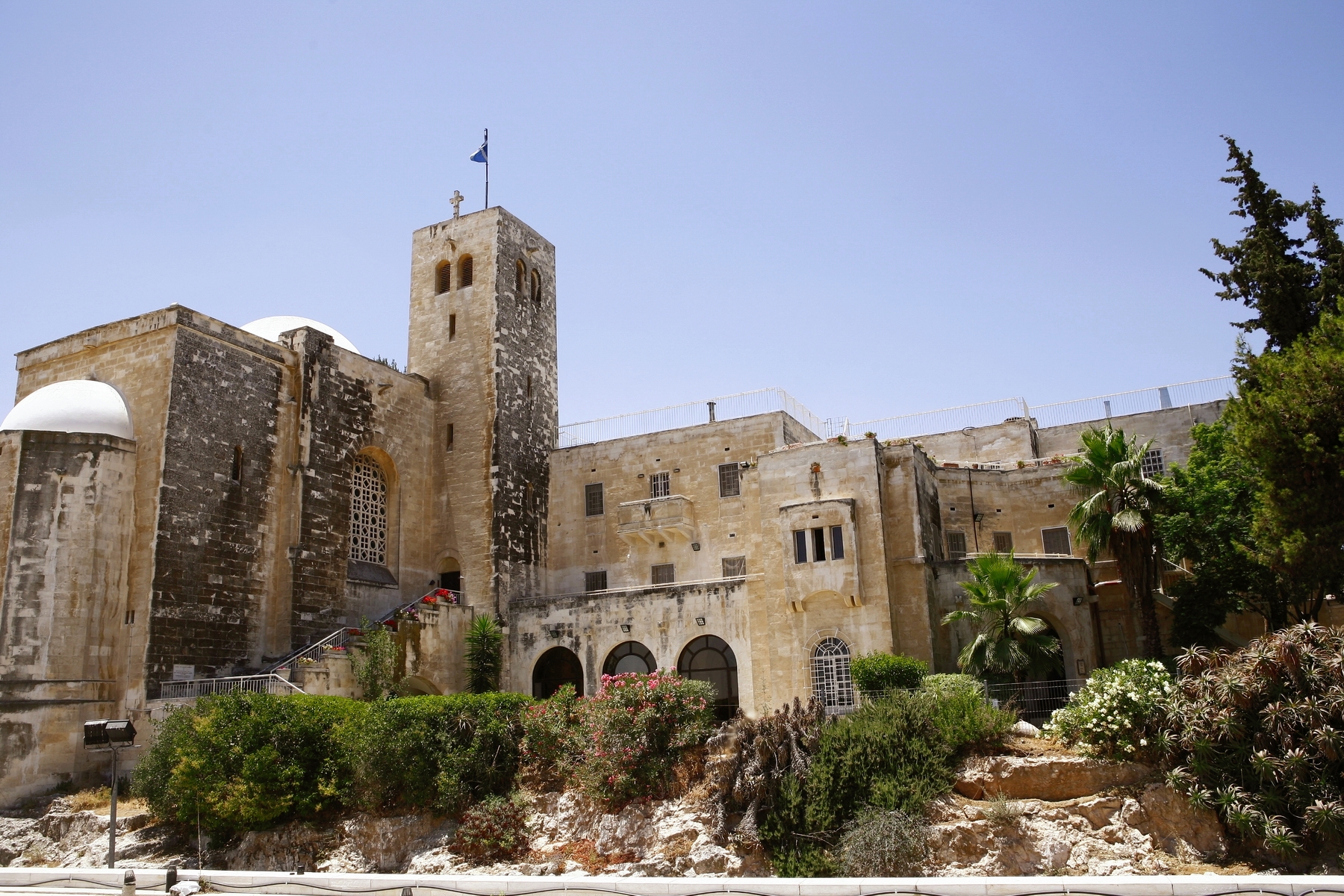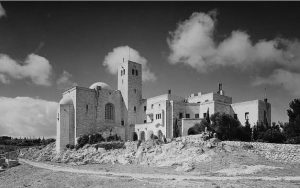
BETWEEN 1948 – 1967
The character of St Andrew’s changed dramatically in 1947/48 with the end of the British Mandate and the establishment of the State of Israel and the associated war, which led to a division of both Jerusalem and the Holy Land. The Scottish population of the city plummeted with the withdrawal of the British military administration and St Andrew’s found itself just on the western side of the Green line that divided the city, cut off from most of Jerusalem Christian community and the majority of the Holy sites, which were in the part of the city controlled by Jordan. The minister of St Andrew’s used to ring St Bride’s bell at a fixed time each day to indicate that he was still alive; there was no more conventional contact between East and West Jerusalem.
The hospice during this time was operating only intermittently. The Rev Clark Kerr, who was in charge, was often the only person at church for the Sunday morning service. On his departure, the Church and hospice were left in the care of the sometime Session Clerk and Treasurer, a former policeman and foundation member of St Andrew’s named Mr John Reid who volunteered as guardian while his wife Mary worked as Lady Warden of the hospice. With the Rev Hall they maintained worship at a time when this proved to be of great spiritual and religious value, and Mrs Reid relied on her resourcefulness to keep the hospice serviceable and prevent it from falling into complete disrepair.. Mr Reid was awarded an MBE for his efforts, a recognition which reflected also the innumerable services to the Church of Mrs Reid and their children Melville, Mary and Catherine, through this time of political turmoil, acute danger, and socio-economic problems. In 1955 the Rev and Mrs William Gardiner Scott took over the care of the Church and hospice.
Bill and Darinka recorded that the hospice was a terrible mess. Junk was stored everywhere, rooms had been let out to missionaries, orange boxes were piled high to the ceiling, only primus stoves were available for cooking and laundry had to be washed in large metal tubs heated over stoves on the floor. As reliable domestic staff proved difficult, so the Gardiner Scott’s did most of the work themselves.
AFTER 1967 WAR
During the 1967 Six Day War, St Andrew’s was placed in a dangerous position as it was in the firing line between the Israeli and Jordanian forces and the bullet marks on the outside of the building still bear witness to the fierce fighting that took place.
Although there were other wardens that took their turn at St Andrew’s, the Gardiner Scott’s came back for a second stint and soon faced the short but grim Six Day War. Catering for the hospice guests (plus eight people who had been decanted from the British Consulate) was, to say the least, difficult. The result of the Six Day War was that Jerusalem was once again physically, if not socially united, with access again to the Holy sites and the wider Christian community.
As a result there was a considerable increase in the pilgrim traffic coming to the Church and Hospice and while there continued to be a small local congregation, made up of Palestinian and expatriate Christians living in the city, a ministry to Pilgrims became the central focus of St Andrew’s.
In recent years, the Church of Scotland, through its local congregation at St Andrew’s and at the level of its World Mission Council, has become conscious of the need not only to minister to pilgrims from overseas, but also to engage more fully with the people and problems of this troubled land.
As a result several steps have been taken, including the creation of two formal partnerships between the Church of Scotland and, the Diocese of the Episcopal Church in Jerusalem and another with the Evangelical Lutheran Church in Jordan and the Holy Land.
The Church is seeking to develop a greater educational emphasis, by organising programmes and alternative pilgrimages that will enable visitors to meet local people, especially local Christians, and so deepen their understanding of the contemporary problems of the Holy Land.
 Sunbula, a non-profit organisation which markets handicrafts from self-supporting women’s groups was located at St Andrew’s in 1988, founded on principles of justice and fair-trading. The organisation has a shop in the Guesthouse which is open to visitors and guests at specific times of the day.
Sunbula, a non-profit organisation which markets handicrafts from self-supporting women’s groups was located at St Andrew’s in 1988, founded on principles of justice and fair-trading. The organisation has a shop in the Guesthouse which is open to visitors and guests at specific times of the day.

